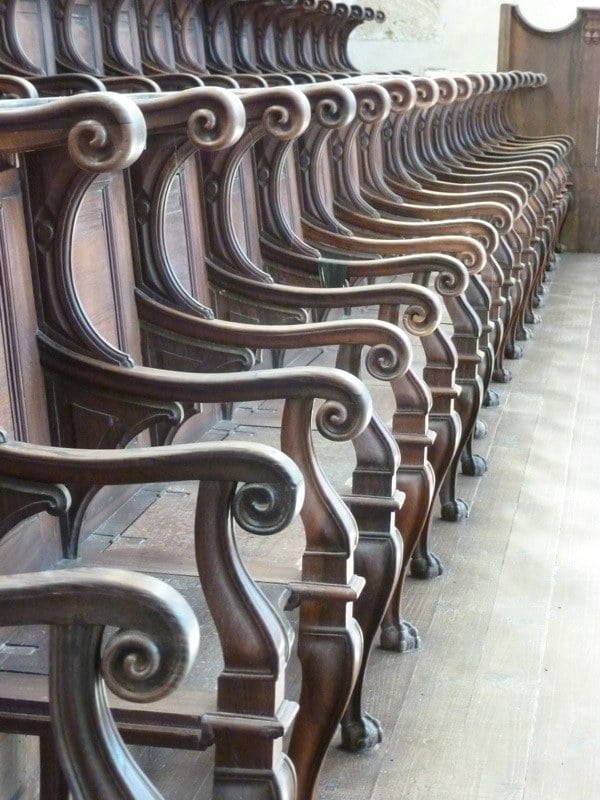Who Were the Knights Templar?
The Knights Templar, officially known as the Poor Fellow-Soldiers of Christ and of the Temple of Solomon, was a Catholic military order founded in 1119 AD. Originally established to protect Christian pilgrims traveling to the Holy Land during the Crusades, the order quickly grew in power, wealth, and influence. The Templars were known for their distinctive white habits adorned with a red cross, their fighting prowess, and their role as one of medieval Europe’s first banking organizations.
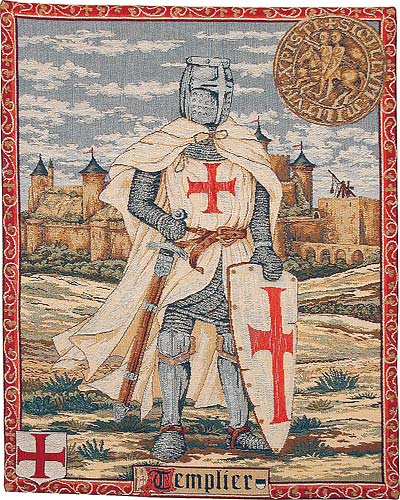
Martin&Linda, Flickr
The order combined the roles of monastic order, military force, and financial institutions. This unique combination allowed them to amass significant wealth and power across Europe and the Middle East by the early 14th century. This aroused suspicion and envy among European rulers. King Philip IV of France, heavily indebted to the Templars, saw an opportunity to solve his financial problems by accusing them of heresy and other crimes. In 1307, he ordered the arrest of Templar leaders in France, which led to widespread persecution, forced confessions, and the seizure of their assets.
Under pressure from King Philip, Pope Clement V reluctantly ordered investigations into the Templars and, in 1312, officially disbanded the order at the Council of Vienne. Although the charges of heresy were never conclusively proven, the scandal and damage to the Church’s reputation were used to justify the dissolution. The Templars’ wealth was largely transferred to the Knights Hospitaller. Jacques de Molay, the last Grand Master, was burned at the stake in 1314 after retracting his confession, marking a dramatic and tragic end to the order’s history.
The Knights Templar in Portugal
The Knights Templar played a crucial role in the history of Portugal, particularly during the country’s formative years. They arrived in Portugal around 1128, during the reign of Queen Teresa. The order’s military expertise was invaluable in the Reconquista – the centuries-long process of reclaiming the Iberian Peninsula from Moorish rule.
The Knights Templar may have been disbanded elsewhere by 1312 but not in Portugal, as the reigning King Dinis did not believe the accusations made against the Order by King Philip IV. King Dinis of Portugal convinced Pope Clement V to allow him to form a new Order known as the Order of Christ, which essentially offered the former Knights Templar protection under a new name. King Dinis transferred the Knights Templar holdings in Portugal to the Order of Christ and moved the Knights Templar headquarters from Tomar to the fortress at Castro Marim close to the Spanish border. He also welcomed many Templar refugees to Portugal, who brought astronomical, nautical, and cartographic knowledge.

The new Order of Christ dedicated itself to wars against Muslim states in Africa and the re-conquest of Iberia from the Muslim people. One hundred years after setting up the Order at Castro Marim, one of the most famous men in Portuguese history, Prince Henry the Navigator, moved the headquarters back to Tomar. He intended to bring the knowledge passed down from the Jews and Arabs of mathematics, trigonometry, astronomy, and numbers all together to try and calculate the position of a ship at sea. The Knights Templar Castle in Tomar became the center of these discoveries in the 15th and 16th centuries, which would help Portugal support and finance maritime expeditions, discover new sea routes to the Orient, and expand the Portuguese empire. Prince Henry the Navigator led the Order of Christ for 20 years and King Manuel I of Portugal was a Grand Master.
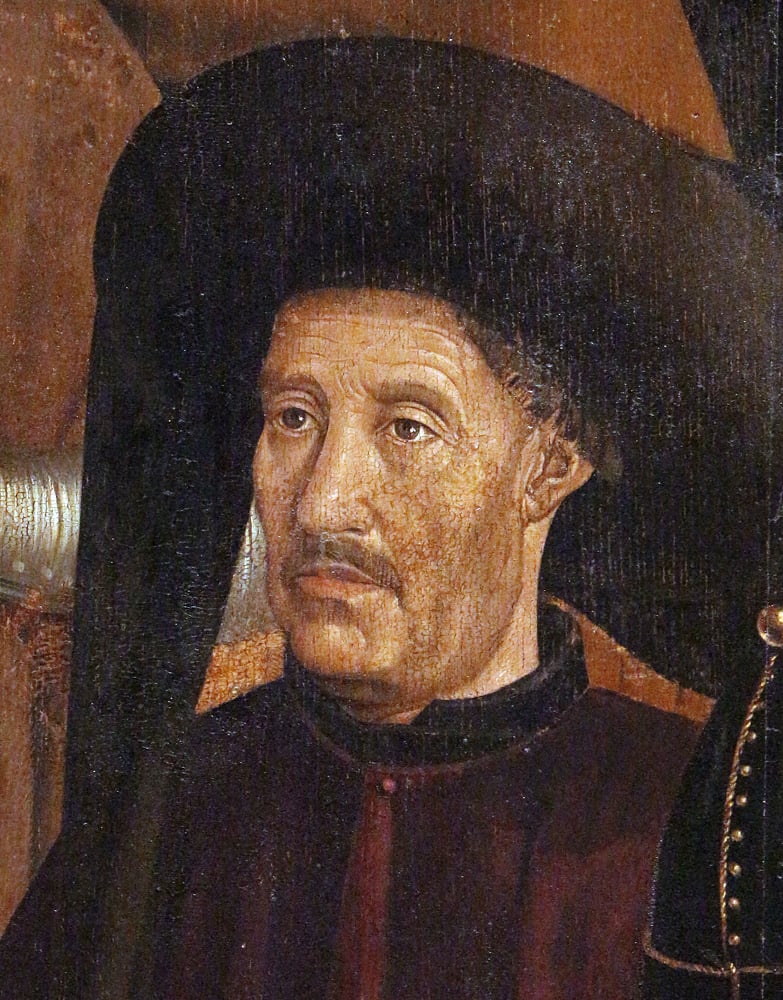
Over the centuries, the Order of Christ evolved from a religious-military organization into more of a secular honorary order, and it still exists today as a prestigious order of merit in Portugal.
Secrets and Rituals of the Knights Templar
The Knights Templar were surrounded by mystery and speculation, much of which persists to this day. While many claimed “secrets” are likely exaggerations or later inventions, some aspects of Templar life and practice were indeed shrouded in secrecy:
- Initiation Rituals – New members underwent secret initiation ceremonies, the details of which were closely guarded.
- The Baphomet – A mysterious idol that the Templars were accused of worshipping, though no evidence of such worship has ever been found.
- Banking Practices – The Templars developed advanced financial techniques, including an early form of banking, which they kept secret to maintain their advantage.
- Military Tactics – Their fighting techniques and strategies were closely guarded secrets that contributed to their battlefield success.
- Alleged Holy Relics – Some believe the Templars possessed powerful religious artifacts, such as the Holy Grail or the Ark of the Covenant, though no concrete evidence supports these claims.
The Knights Templars’ Lasting Influence in Portugal
Even centuries after their official dissolution, the Knights Templar have left an indelible mark on Portugal, which is evident in the nation’s architectural, cultural, and symbolic heritage. Templar castles, churches, and fortifications, particularly in Central Portugal, are prominent features of the Portuguese landscape. Among these, the Convent of Christ in Tomar stands as one of the country’s most significant historical sites and showcases the enduring legacy of the Templars in Portuguese architecture.
The influence of the Templars also extended to Portugal’s Age of Discovery, with their successor, the Order of Christ. The order’s distinctive cross famously adorned the sails of Portuguese caravels, symbolizing the Templar spirit in the nation’s expansion across the seas. Culturally, the Templars have deeply influenced Portuguese folklore, literature, and popular culture, with numerous local legends and traditions tracing their origins to the order. Their impact is also felt in some esoteric and masonic traditions in Portugal, which claim, albeit controversially, a connection to the Templars.
Key Templar Sites and Events in Portugal
1. Conquest of Santarém (1147)
The conquest of Santarém was a pivotal moment in the Reconquista and a significant victory for the Knights Templar in Portugal. Led by their Grand Master Gualdim Pais, the Templars played a crucial role in supporting King Afonso Henriques in this strategic battle. Santarém, with its commanding position over the Tagus River, was a key Moorish stronghold. The city’s capture not only expanded Christian territory but also demonstrated the Templars’ military prowess and their importance to the Portuguese monarchy. This victory helped cement the Templars’ position in Portugal and led to them being granted significant lands and privileges in the newly conquered territories.
2. Castle of Tomar (1160)
The Castle of Tomar, a UNESCO World Heritage site, remains the most impressive and well-preserved Templar stronghold in Portugal. Construction began in 1160 under the direction of Gualdim Pais, who chose its strategic location atop a hill overlooking the Nabão River. The castle’s most distinctive feature is the 16-sided Charola (rotunda), believed to be modeled after the Church of the Holy Sepulchre in Jerusalem. This unique architectural element served as the knights’ private oratory and is adorned with intricate frescoes and gilded decorations. The castle complex expanded over centuries, with each addition reflecting different architectural styles from Romanesque to Manueline. Today, it offers visitors a fascinating journey through Portuguese history and Templar legacy.
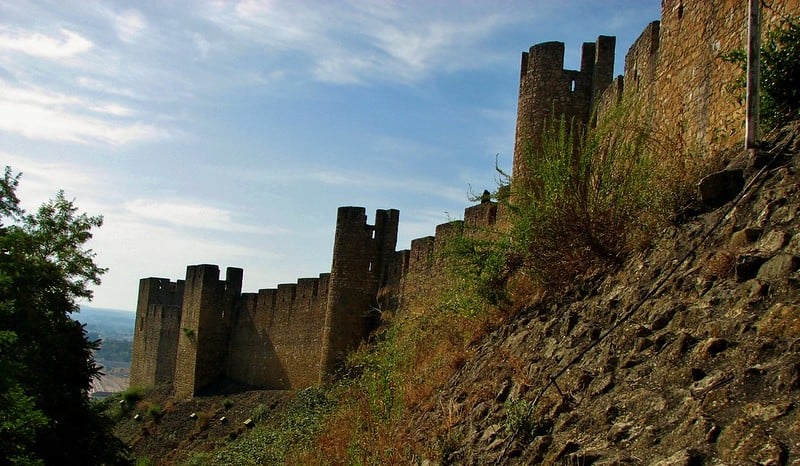
3. Convent of Christ
After Pope Clement V dissolved the Knights Templar in 1312, King Dinis of Portugal shrewdly created the Order of Christ in 1319. This new order inherited the Templars’ assets in Portugal, which effectively ensured the continuation of their mission and wealth under a new name. The Convent of Christ in Tomar, formerly the Templar headquarters, became the new order’s seat of power. Over the centuries, the complex was expanded and embellished, most notably during the Manueline period in the early 16th century. The famous Manueline Window, an exquisite example of this ornate style, was added during this time. The Convent of Christ played a significant role in Portugal’s Age of Discovery, and Henry the Navigator serving as its Grand Master. Today, it demonstrates an enduring influence of the Templars in Portuguese history and architecture.
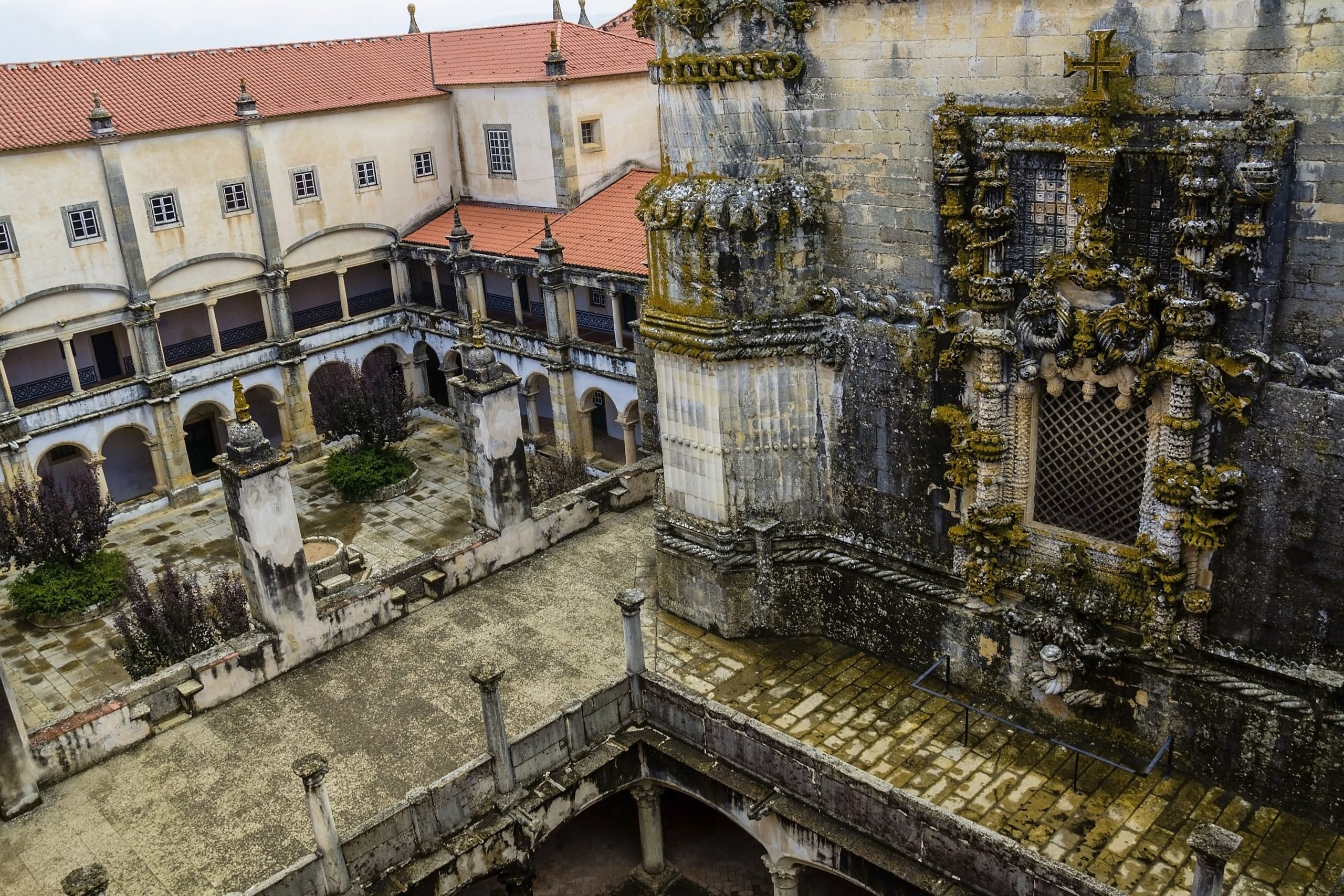
4. Almourol Castle
Perched on a small granite island in the middle of the Tagus River, Almourol Castle is perhaps the most picturesque and romantic of all Templar castles in Portugal. Built in the 12th century on the site of an older fortification, it served as a key defensive position along the Tagus. The castle’s isolated location and well-preserved state make it one of the most emblematic symbols of the Knights Templar in Portugal. Its sturdy walls, central keep, and dramatic setting have inspired numerous legends and stories over the centuries. Despite its small size, Almourol Castle played a crucial role in the Templars’ mission to secure the newly reconquered territories and protect important trade routes. Today, visitors can access the island by boat, allowing them to explore this fairy-tale-like fortress and imagine life as a medieval Templar knight.
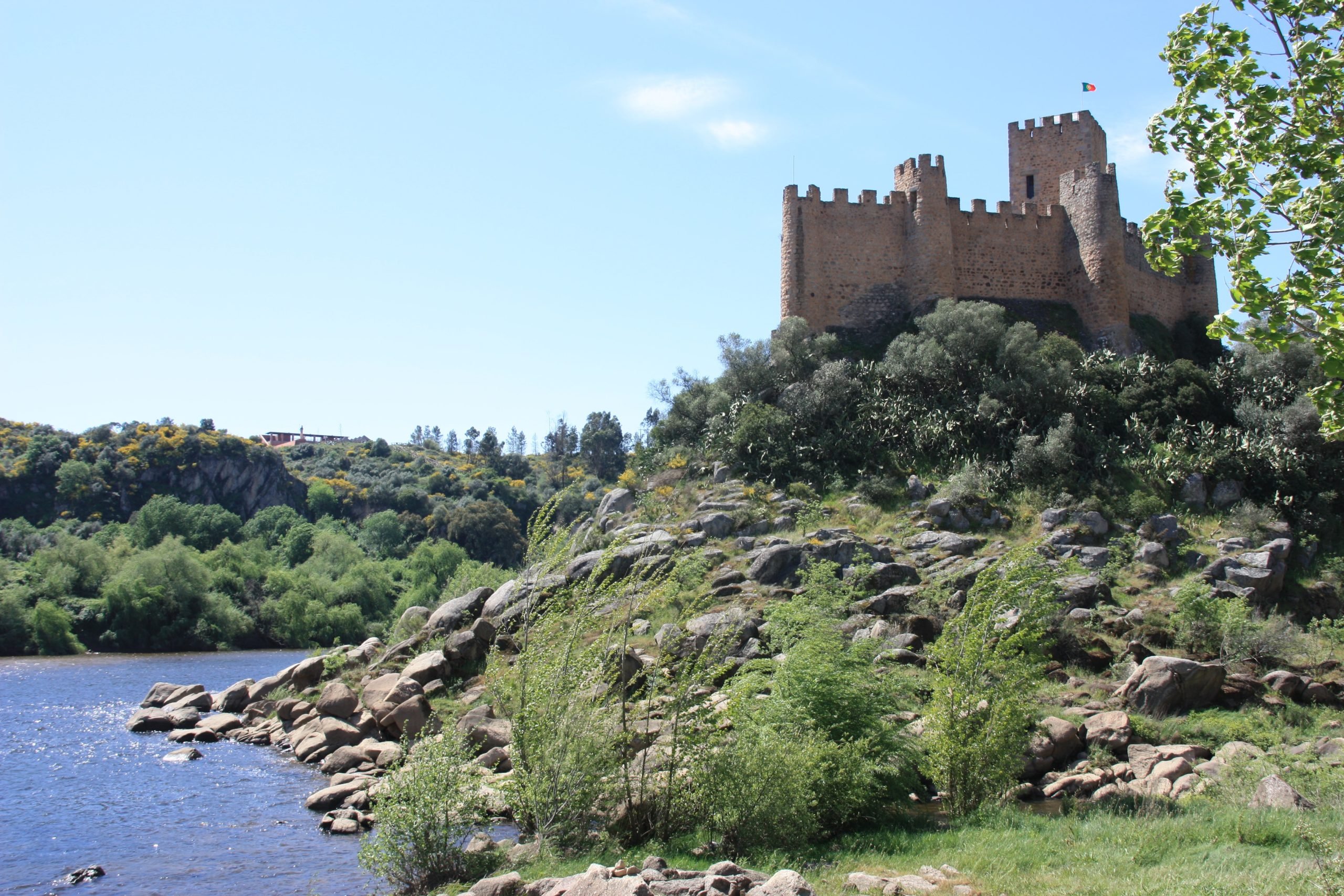
5. Castle of Monsanto
The Castle of Monsanto, while less well-known than some other Templar sites, is a remarkable example of medieval military architecture. What sets Monsanto apart is its ingenious integration with the natural landscape. Built atop a steep hill, the castle and the surrounding village seem to grow out of the enormous granite boulders that dot the hillside. The Templars took control of Monsanto in the 12th century. They reinforced and expanded the existing fortifications. The castle’s unique construction, with walls and towers built between and sometimes incorporating the massive rocks, made it an almost impregnable fortress. Today, Monsanto is known as “the most Portuguese village in Portugal,” and its castle offers visitors stunning views of the surrounding countryside and a glimpse into the Templars’ building techniques.
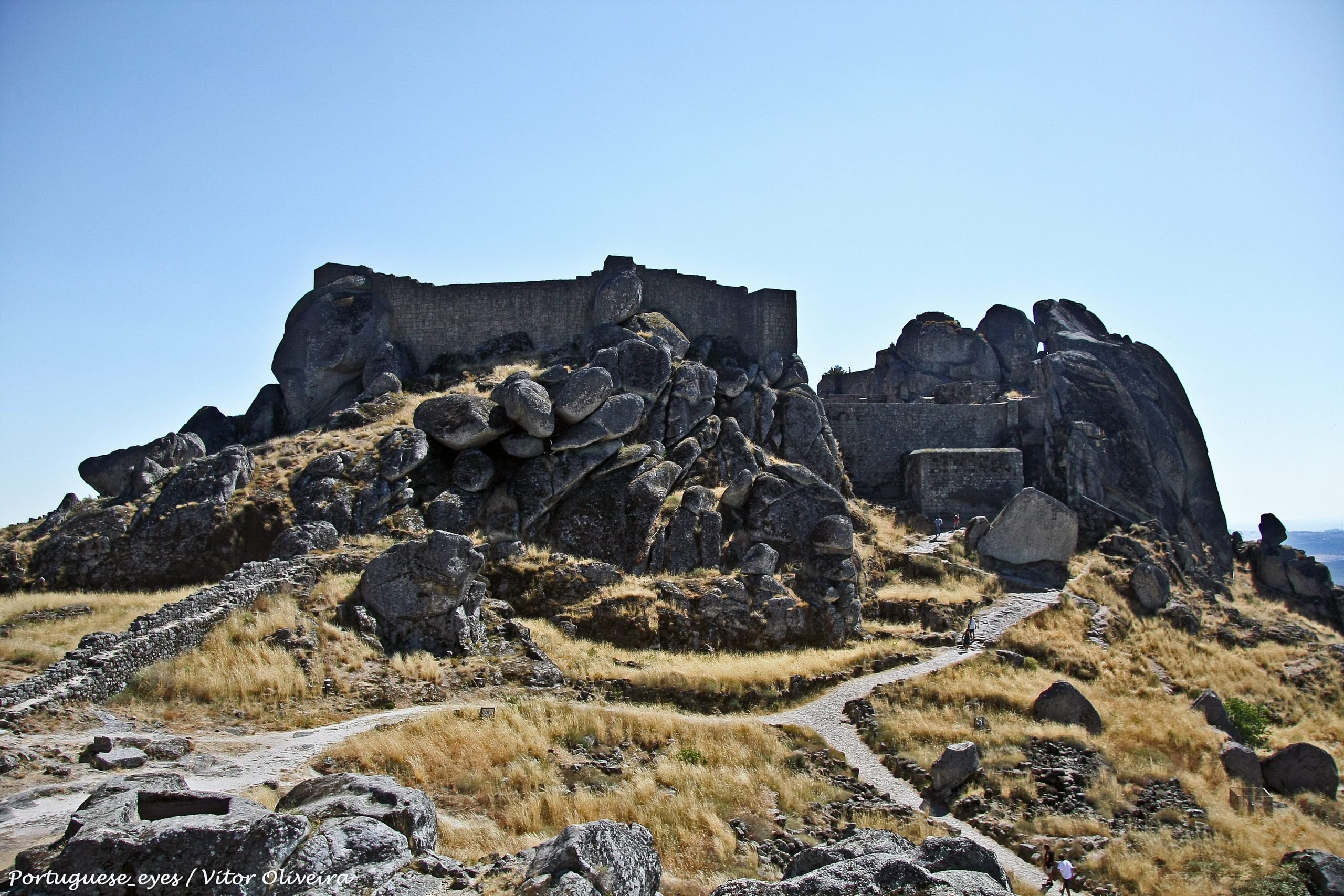
6. Quinta da Regaleira
Located in Sintra, Quinta da Regaleira is a early 20th-century estate that, while not built during the Templar era, is deeply connected to Templar symbolism and mythology. Designed by Italian architect Luigi Manini for António Augusto Carvalho Monteiro, a wealthy Portuguese entomologist and lover of the esoteric, the estate is a treasure trove of occult symbolism, much of it linked to the Knights Templar and Freemasonry. The property’s most famous feature is the Initiation Well, a 27-meter-deep inverted tower with a spiral staircase. This well is believed to have been used for Tarot initiation rites, and its design drew from Templar and Masonic traditions. The extensive gardens are filled with grottoes, fountains, and enigmatic structures that reference alchemical and Rosicrucian symbols. While not a true Templar site, Quinta da Regaleira offers visitors a unique glimpse into the enduring fascination with Templar mysteries and their integration into later esoteric traditions in Portugal.
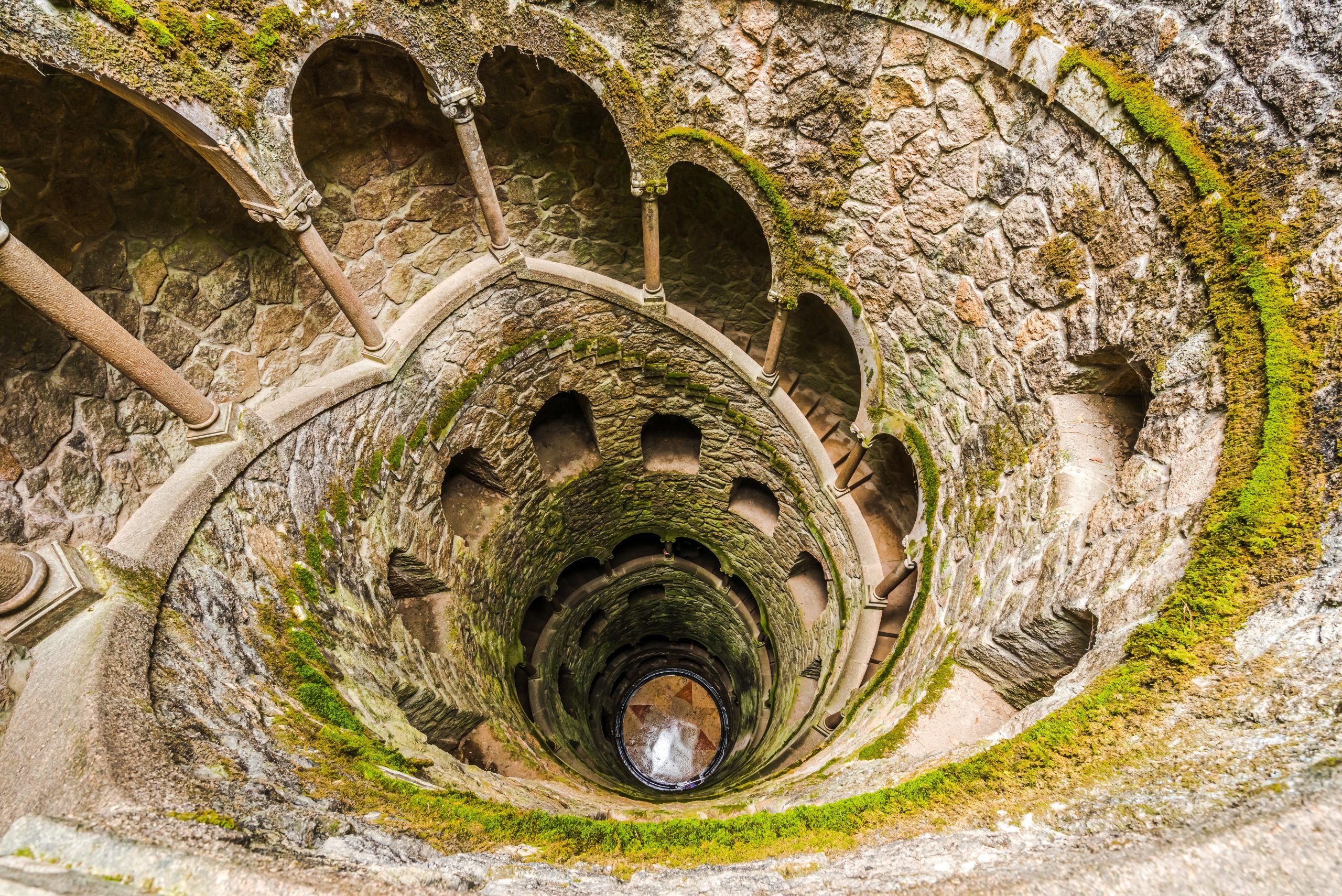
7. Torre de Belém
The Torre de Belém (Belém Tower) in Lisbon, while built after the official dissolution of the Knights Templar, bears a strong connection to their legacy through the Order of Christ. Constructed between 1514 and 1520 during the reign of King Manuel I, the tower is one of the finest examples of Manueline architecture, a style that often incorporated Templar and maritime symbols. The tower’s exterior is adorned with the distinctive cross of the Order of Christ, the successor to the Templars in Portugal, reflecting the order’s crucial role in Portugal’s Age of Discovery. This cross was also emblazoned on the sails of Portuguese ships during their global explorations. The tower served both as a fortress guarding Lisbon’s harbor and as a ceremonial gateway to the city. Its intricate stonework includes nautical themes, religious symbols, and exotic motifs brought back by Portuguese explorers. Today, the Torre de Belém stands as a UNESCO World Heritage site. It symbolizes the golden age of Portuguese exploration and the enduring influence of the Templar legacy in shaping Portugal’s identity and global ambitions.
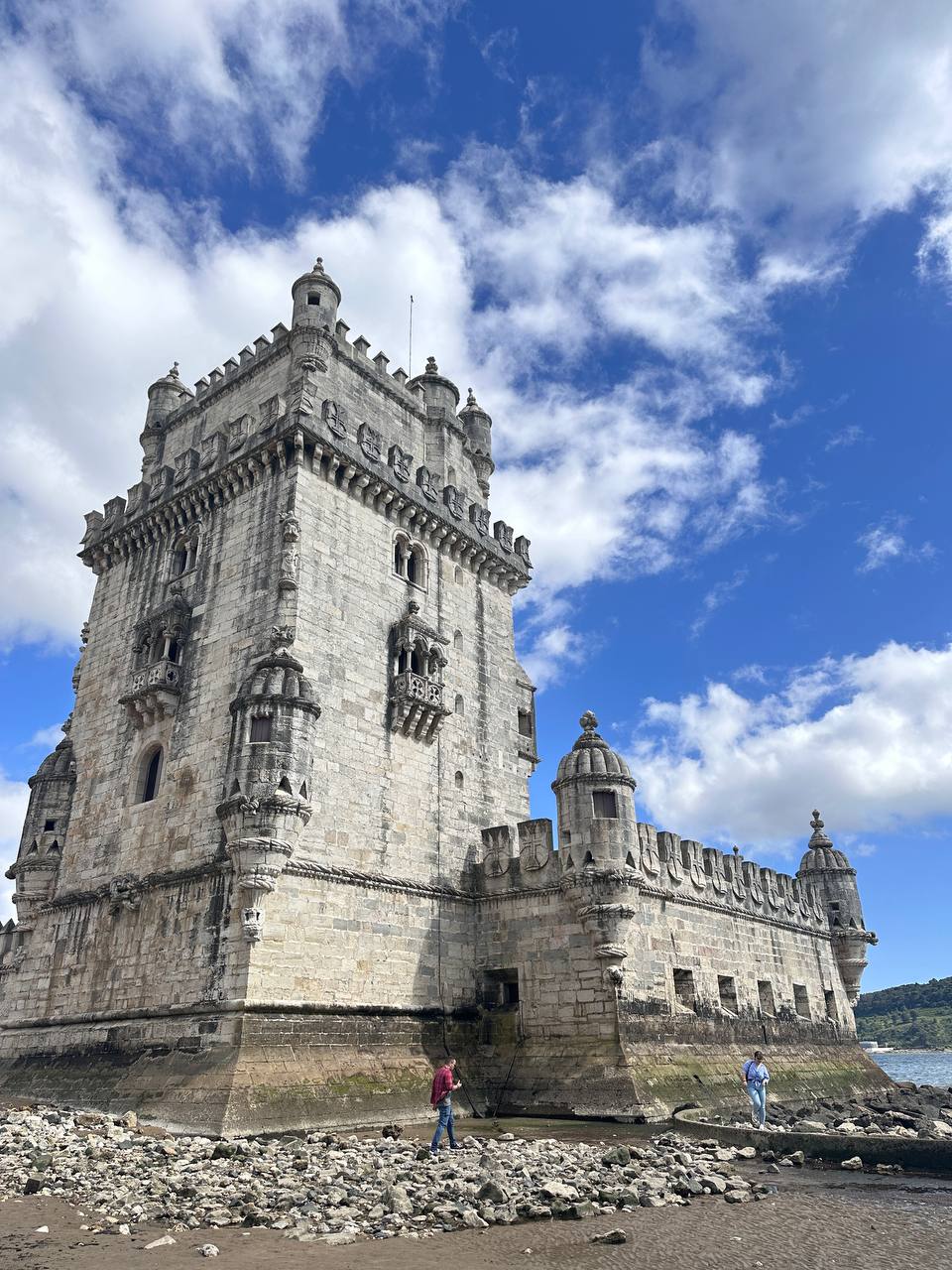
8. Biester Palace in Sintra
Biester Palace is another fascinating site in Sintra that, while not directly Templar, is steeped in symbolism associated with the Knights Templar and other esoteric traditions. Built in the late 19th century for Frederico Biester, a wealthy merchant, the chalet was designed by the Portuguese architect José Luís Monteiro in the Romantic style. The building’s architecture and decorative elements incorporate various symbolic references, including some related to the Templars and Freemasonry. Of particular interest is the chalet’s tower, which resembles a small castle keep and adds to the building’s mystical atmosphere. The interior of Biester Palace is adorned with intricate wood carvings, stained glass windows, and other decorative elements that often incorporate esoteric symbols. While less well-known than some of Sintra’s other landmarks, Biester Palace gained renewed attention after being featured in the film “The Ninth Gate” (1999), which deals with themes of occultism and rare books. This connection has further cemented its place in the popular imagination as a site of mystery and hidden knowledge, echoing the enduring fascination with Templar lore in Portugal. In the basement of Biester Palace, you can see a small initiation chamber with Knights Templar lore. This is not surprising as its next-door neighbor is Quinta da Regaleira.
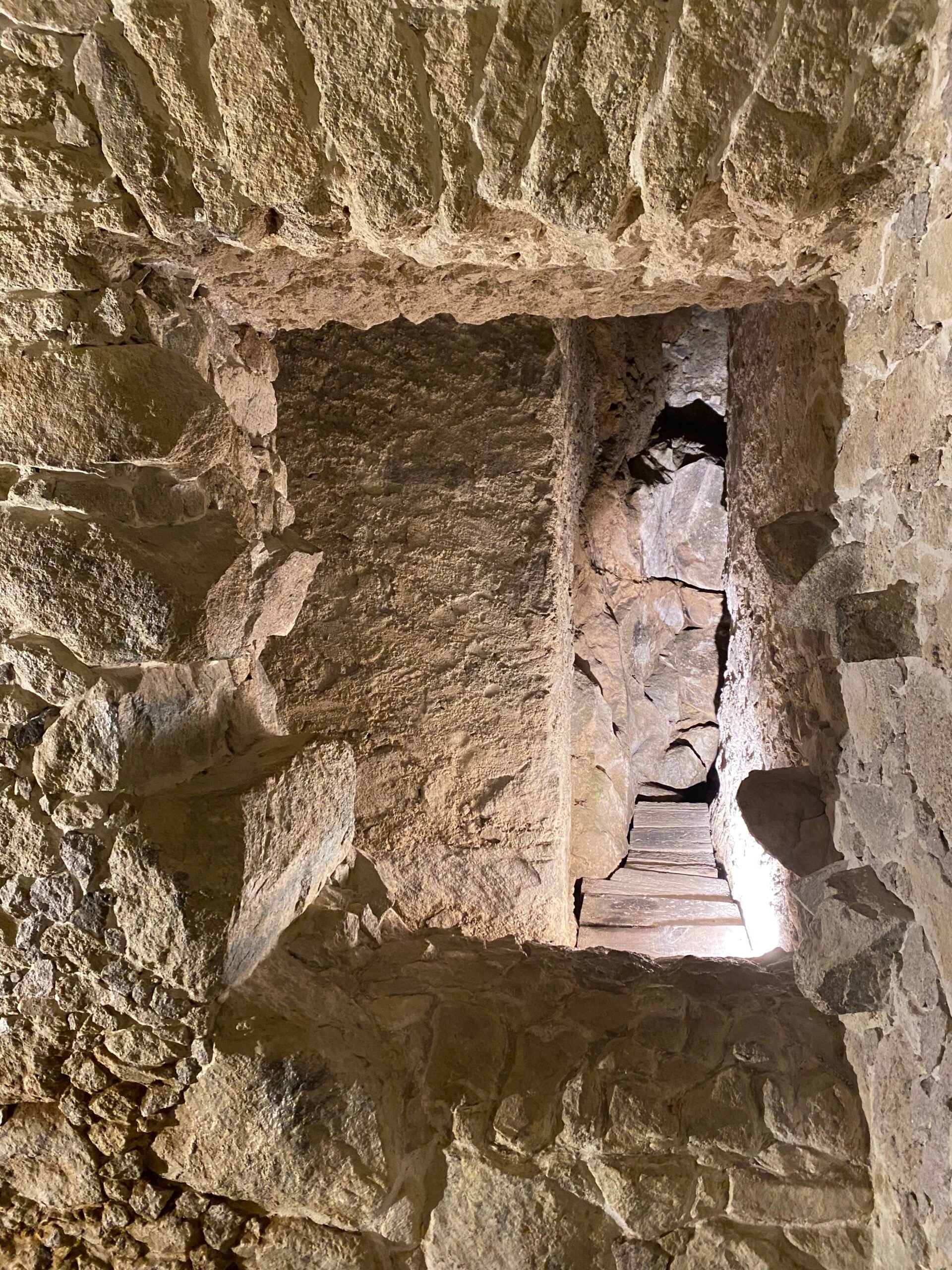
Today, the Knights Templar legacy is preserved in the symbolism found throughout Portugal, with Templar crosses and other emblems visible in various coats of arms, flags, and decorative elements across the country. These enduring symbols and stories ensure that the Knights Templar remain an indelible part of Portugal’s historical and cultural identity.
Knights Templar Tours
- Tomar&Templars, Private Walking Tour, by Local Guide
- Private Tour Almourol-Tomar, Templars
- Sintra’s Private Walking Tour: Regaleira and Biester Palace
- Sintra, Regaleira and Pena Palace Guided Tour from Lisbon

